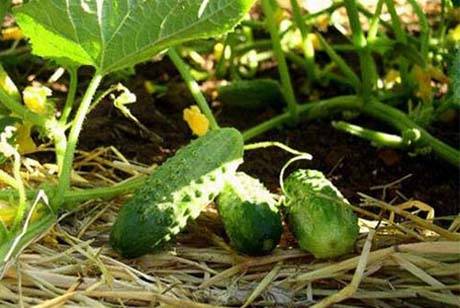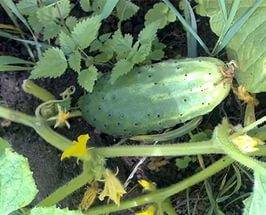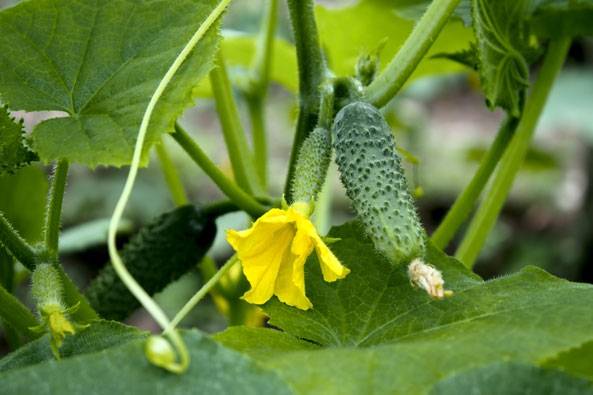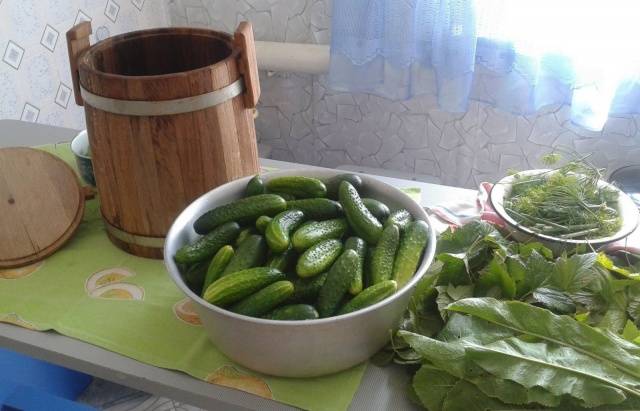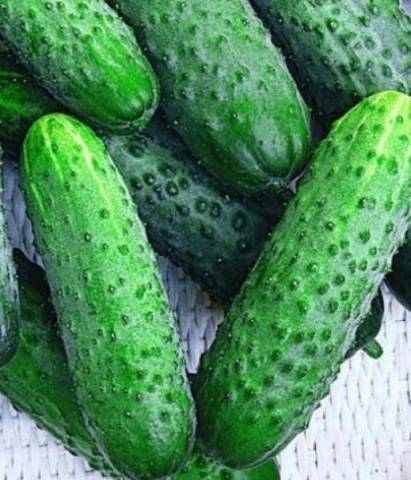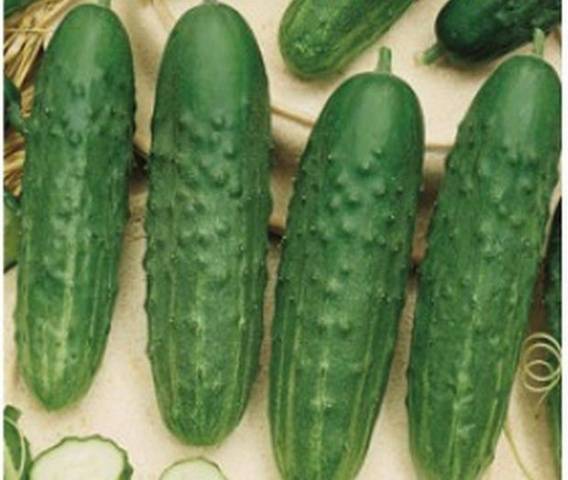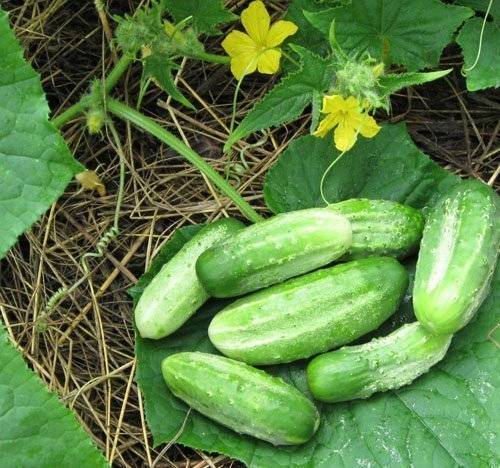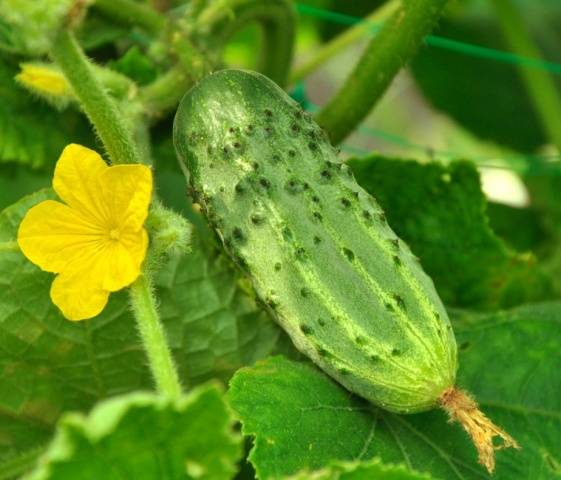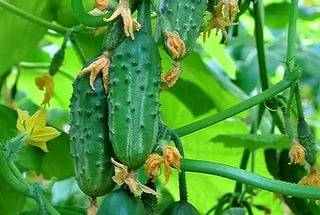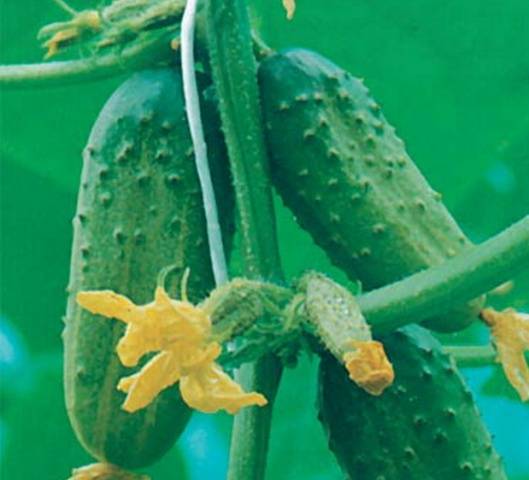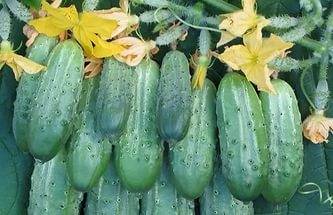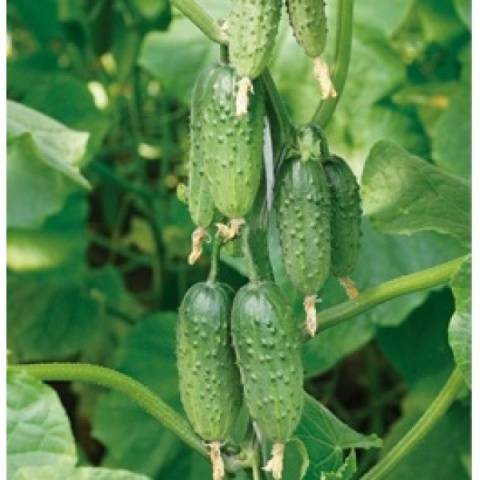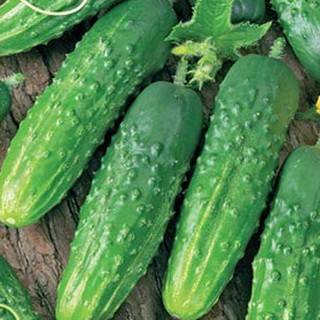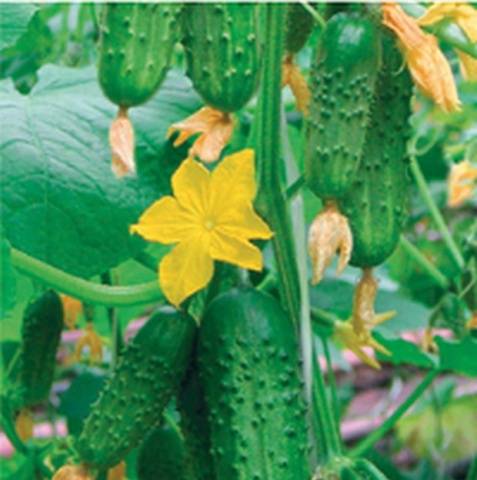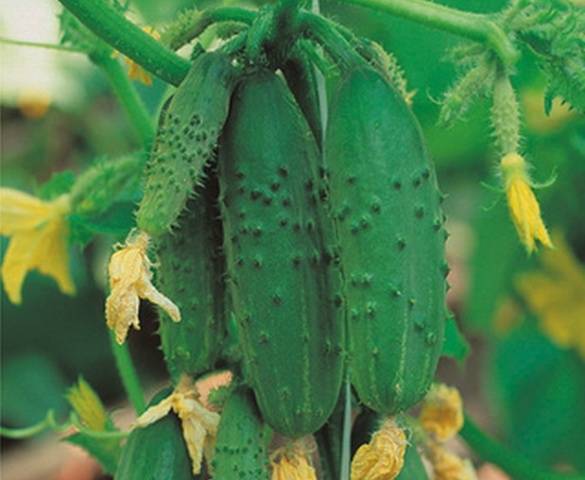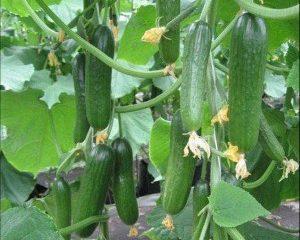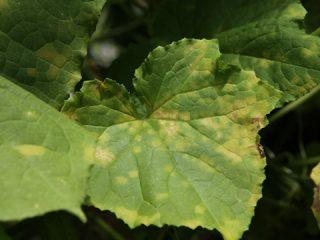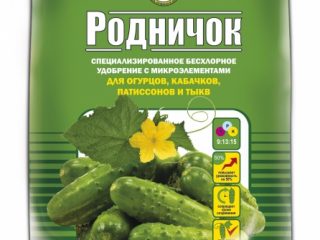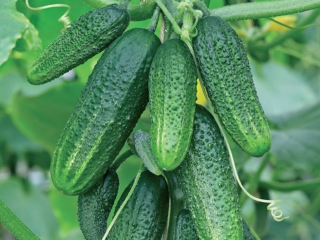Content
Every gardener, planting cucumber seeds in the ground, hopes to get a good harvest. However, this vegetable is very heat-loving and produces less fruit in open ground than in a greenhouse. And yet, there are many bee-pollinated varieties adapted for such conditions. With good care, they will provide the owner with a sufficient amount of harvest, especially since every summer resident knows that a cucumber grown under the sun is tastier than a greenhouse one.
What is the secret of dark and light thorns
Looking at different varieties of cucumbers, the fruits of which are ripened in open and closed ground, you can notice different colors of the thorns. Some are white, while others are black. Some people consider dark thorns to be an indication that the cucumber is already old and bitter. Actually this is not true.
The light thorns of the fruit symbolize the delicate peel and juicy pulp of most salad varieties.The presentation of such cucumbers lasts for a long time, and they are eaten fresh.
Dark-spiked cucumbers have rough skin and less juicy flesh. However, some varieties may be superior in fruit aroma to the white-thorned vegetable. Cucumbers with black thorns are optimal for canning and long-term storage. These qualities are inherent in most bee-pollinated varieties intended for open ground. The only disadvantage of such cucumbers is that if they are not harvested on time, they quickly turn yellow. It is precisely the yellowness that indicates the old age of the fetus.
Types and benefits of popular bee-pollinated varieties
Thanks to the work of breeders, many varieties of cucumbers have appeared with different types of weaving, low and tall, with small and large fruits, even in different colors. Bees, by pollinating cucumber flowers, help produce a harvest, but the seed material can be collected from ordinary varieties. If the bee-pollinated plant is a hybrid, the seeds from it will be bad next year.
Bush cucumbers
Many people are accustomed to seeing cucumber fruits hanging on long vines. It is advantageous to plant them in a limited area, for example, in a greenhouse. And in the open ground, if the size of the garden allows, it is easier to grow bee-pollinated bush varieties. The plant does not spread along the ground and does not require the construction of large trellises.
Growing bush cucumbers in open ground has its advantages:
- having a maximum length of lashes of 80 cm, the plant forms a neat bush;
- These varieties of cucumbers bear fruit well even in a lean year;
- bush varieties are resistant to common diseases;
- the fruits of bush varieties of cucumbers are usually small in size, optimally suited for preservation;
- To get an early harvest of cucumbers, the seeds are planted immediately in open ground.
In general, everything is clear about the advantages. The main thing is to properly care for the plant, and the bees will do their job in producing the crop.
Gherkins
Cucumber varieties that form small fruits 5–10 cm long are called gherkins. They should not be confused with unripe greens, picked by gardeners ahead of time for preservation.
Gherkins are valued for their taste, which is one step higher than ordinary cucumbers. The plant on the vines forms bunched ovaries, which turn into a full-fledged vegetable on the third day.
Growing and caring for gherkins is almost identical to ordinary cucumbers, although they have their own characteristics. This type of cucumber is very heat-loving and for open ground it is more acceptable to plant seedlings in beds after harvesting early greenery. If you decide to plant gherkin seeds in open ground, it is best to do this in early June, when the ground has completely warmed up.
Gherkins are picky about soil. It should be loose with an acidity level of 6-7 pH. Balanced nutrition is important for the plant. Nitrogen, magnesium, potassium, calcium and phosphorus are required as fertilizing. Once every five years, the area for gherkins is fertilized with manure at the rate of 10 kg/1 m2.
Hybrids
Bee-pollinated hybrids have proven themselves well in open ground.They are distinguished by their tufted ovary and resistance to many diseases and cold.
The ease of growing cucumber hybrids lies in the absence of the need to pinch shoots to form a bush.
Thanks to the work of breeders, this type of cucumber has taken all the best that ordinary varieties have. Hybrids bear fruit for a long time, but it is impossible to obtain seed material from them at home. The cucumber has a small seed, of course, but it does not retain the original qualities of the original variety. The grown plant will give a meager harvest of cucumbers or, in general, refuse to bear fruit.
Review of the best early ripening varieties
After a brief introduction to the varieties of cucumbers, it’s time to review the best bee-pollinated varieties that bear fruit well in open ground. And it would probably be better to start with the early varieties.
"Altai early"
The bee-pollinated variety is resistant to fungal diseases.
Grown cucumber seedlings from seeds planted in April are planted in an open garden bed at the end of May. After about 40 days, the first mature fruits will appear, ready for consumption. The vegetable is not suitable for preservation, but is very tasty in salads.
"Competitor"
This cucumber variety, resistant to many diseases, takes root well in open ground. An adult plant begins to bear fruit 42 days after planting in the ground.
The vegetable is well suited for pickling, however, there is a significant drawback. If poorly watered, cucumber tends to accumulate bitterness. The plant is planted as seedlings outside no later than the first week of June. The fruits are small in size and, with sufficient moisture, very juicy.
"Universal"
The name of the cucumber suggests that the fruit is suitable for winter canning and fresh salads.
This open ground variety also requires the participation of bees for pollination. A plant with long vines is highly productive. With proper care from 10 m2 can bring up to 0.6 centners of harvest. The cucumber begins to bear fruit 50 days after germination.
Review of the best middle and late varieties
Traditionally, after early vegetables there are always mid- and late-ripening cucumbers. There are a lot of such bee-pollinated varieties. We will try to choose the best of them.
"Barrel salting"
A very prolific variety of cucumbers, resistant to many diseases, especially aracnose.
Fruiting occurs on the 57th day. The vegetable tastes good raw and pickled. It is very suitable for pickling, as it always retains its dense pulp. During storage, the cucumber does not wither for a long time and tolerates transportation well.
"Far Eastern 27"
The plant, pollinated by bees, withstands heat and many diseases and produces a yield of about 6 kg per 1 m2. Fruiting occurs 50 days after germination. A medium-sized cucumber weighs about 135 g.
Ideal for pickling in a barrel and for salad.
"Phoenix Plus"
The bee-pollinated plant is a relative of the Phoenix family. The late variety of cucumbers begins to bear fruit 2 months after planting in the garden. It is distinguished by good immunity to viral diseases, abundant and long-term fruiting. From 1 hectare it can bring 625 centners of harvest.
"Nezhinsky"
Favorite variety of summer residents of the post-Soviet space. Small cucumber fruits up to 13 cm long are very tasty fresh or pickled.
The size and shape of the fruit are ideal for canning in jars. The plant is drought-resistant and bears fruit 50 days after germination.
Bee-pollinated hybrids
It would be wrong to ignore bee-pollinated cucumber hybrids. They also take root well in an open garden bed, bringing good yields.
"Swallow F1"
The hybrid is early ripening. The medium-sized fruits weigh up to 105 g. At the beginning of May, they are sown as seedlings, and by the end of the month they are planted in an open bed. After about 45 days, the first harvest of cucumbers appears. The aromatic fruit is suitable for pickling and making salads.
"ABC F1"
A high-yielding hybrid pollinated by bees, it belongs to the gherkins. The plant resists many diseases. The small bright green cucumber fruits are covered with pimples with black spikes. Due to the absence of bitterness they have excellent taste.
"True Friends F1"
An early ripening hybrid also refers to gherkins. It is distinguished by its fertility, resistance to cold and disease. Green cucumber fruits are decorated with light stripes. The peel is covered with pimples with black spines. A big plus is that the vegetable does not accumulate bitterness.
"Compass F1"
The medium-ripening, high-yielding hybrid belongs to the gherkins. The plant is resistant to viral diseases and root rot. Light green fruits with large tubercles are covered with black thorns. The fruit has a sweetish taste.
"Farmer F1"
The mid-ripening hybrid is undemanding in care. The plant is resistant to cold and disease, which allows it to produce abundant harvests for a long time. Bright green fruits with good taste are covered with large pimples with white spikes.
"F1 Lord"
A plant with a predominance of female flowers is classified as a mid-season hybrid. It is grown in open and closed beds. Requires the participation of bees for pollination.The main vine of the plant grows quickly with intensive appearance of side shoots. The cold-resistant hybrid is immune to common diseases, which allows it to bear fruit until September. Knots on the lashes are formed by 2 ovaries. Bright green fruits up to 12 cm long are covered with large pimples with white spines. The vegetable is ideal for canning and barrel pickling.
"F1 Teremok"
The gherkin-type hybrid has high yields and is suitable for open and closed garden beds. A plant with medium vines is covered with female type flowers. Bright green fruits 8–12 cm long with small pimples and black spines. Each plant node can form from 3 to 9 ovaries. Initially, the gherkin was bred for barrel pickling, however, it goes well into preservation.
"F1 Acorn"
The hybrid acquired its name because of its dense pulp with a characteristic crunch. The plant is a bee-pollinated species with a predominance of female flowers. The branching is weak, the length of the side shoots is short. The knot can form from 2 to 12 ovaries. The slow growth of fruits prevents them from overgrowing. Zelentsy 11 cm long with large pimples are suitable for preservation.
"F1 Captain"
A hybrid with female flowers is suitable for growing outdoors and under film. Plant with weak branching in nodes it forms from 2 to 10 ovaries. Gherkins with large white pimples and spikes are suitable for canning and barrel pickling. Due to the slow growth of the fruits, the greens do not outgrow.
This video presents bee-pollinated hybrids for open ground:
Conclusion
In addition to the varieties discussed, there are many other varieties.The main thing is that when choosing cucumbers for open beds, you need to take into account the climate of the region and the size of the land plot allocated for planting seedlings.




